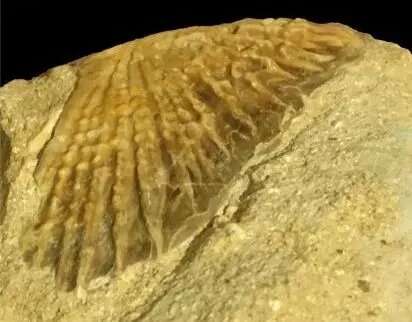This article has been reviewed according to Science X's editorial process and policies. Editors have highlighted the following attributes while ensuring the content's credibility:
fact-checked
peer-reviewed publication
trusted source
proofread
First-ever sturgeon fossil found in Africa

A fossil of a "royal fish"—estimated to be more than 66 million years old—is the first ever to be found in Africa.
Sturgeon have historically been found in the cooler waters of the Northern Hemisphere, excluding Africa, but this specimen was discovered in Morocco by a University of Portsmouth paleontologist.
The discovery of this fossil in Africa is particularly significant because it is the first of its kind to be found on the continent, suggesting that sturgeons were once more widespread than previously thought.
Professor David Martill noticed the fossil when he was visiting a well-known Moroccan fossil site during a field trip last November. He said, "I found a piece of rock with bucklers, the bony external plates found on these heavily armored fish, and I knew straight away it was a sturgeon.
"It was a surprising discovery because all sturgeon species have been exclusively found in the Northern Hemisphere in the past. They've been located in North America, Europe, Russian Asia, Chinese Asia, but never in South America, Australia, Africa or India, which are the land masses that made up Gondwana, a supercontinent that existed around 336 million years ago and began breaking up around 150 million years ago."
The paper is published in Cretaceous Research.
Sturgeons have long been valued for their meat and roe, which are eaten as caviar. But as a result of overfishing, along with habitat loss, many species are critically endangered. And several are on the verge of extinction in the wild.
Professor Martill said, "Russian beluga caviar is one of the most expensive in the world. Little did we know that at one time an extremely rare African sturgeon could have been a source of this delicacy."
Sturgeon are often regarded as a living fossil because their ancestors date back to the same time that dinosaurs roamed, over 200 million years ago. They can grow up to seven meters in length and reach a weight of 1.5 tons, although such sizes are exceedingly rare today.
In 1324 King Edward II declared them to be royal fish and any found in the waters around England and Wales are technically still owned by the British monarchy, along with whales and dolphins.
Professor Martill added, "The very first sturgeons appear in the fossil record in the late Triassic period in China. But the oldest true sturgeon ever discovered is probably a specimen in the Steve Etches collection from Dorset's Jurassic Coast in England, which is mentioned in a book Steve and I wrote about fossils in the Kimmeridge Clay Formation.
"This new Moroccan species complicates models of the location of the origin of this important group of fish that is typically so widespread in the Northern Hemisphere."
The specimen is now in the collection of the University King Hassan II, Casablanca.
More information: David M. Martill, A sturgeon (Actinopterygii, Acipenseriformes) from the Upper Cretaceous of Africa, Cretaceous Research (2023). DOI: 10.1016/j.cretres.2023.105546
Journal information: Cretaceous Research
Provided by University of Portsmouth




















